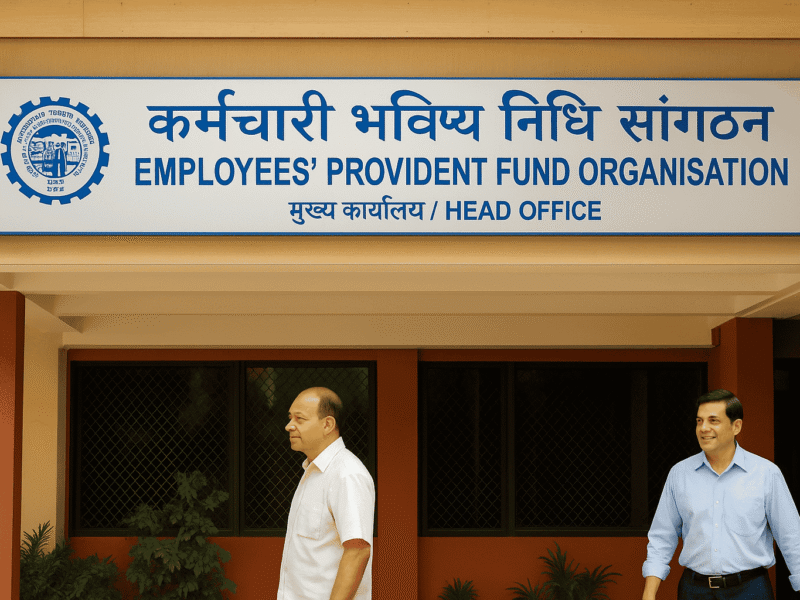Are you planning to submit your EPF claim? Don’t let common mistakes like KYC mismatch, UAN not linked with Aadhaar, or incorrect bank details cause a frustrating EPFO claim rejection.
Despite online systems and automation, thousands of claims get rejected every month due to avoidable errors.
Submitting an Employee Provident Fund (EPF) claim to the Employees’ Provident Fund Organization (EPFO) is often a crucial step for employees when they transition between jobs or retire.
While the process has become more streamlined with the introduction of the Universal Account Number (UAN) and online portals, EPFO claim rejections are still common.
Table of Contents
11 Primary Reasons Why your EPFO Claim May Get Rejected
1. Incomplete KYC
Your Know Your Customer (KYC) details must be fully updated. EPFO requires details like Aadhaar, PAN, and bank account information.
If any of these documents are missing or not verified in the system, your EPFO claim is likely to be rejected.
Tip: Log in to the EPFO portal and check your KYC status under the “Manage” section. Ensure that your Aadhaar, PAN, and bank details are all approved by your employer.
2. UAN Not Linked with Aadhaar
Since the introduction of the Aadhaar-based UAN, it is mandatory to link your UAN to your Aadhaar number.
This helps in reducing fraud and ensures quicker settlements.
If your UAN and Aadhaar are not linked, your claim will be put on hold.
Tip: You can link your Aadhaar with your UAN through the EPFO member portal or using the UMANG app.
3. Mismatch in Name or Date of Birth
Claims are frequently rejected due to mismatches in personal details such as your name or date of birth.
These details should match across your Aadhaar, PAN, and EPFO records.
Tip: Use the “Modify Basic Details” feature on the EPFO portal to correct any mismatches between your documents.
4. Mismatch in UAN and EPFO Records
When submitting a claim, if there is a mismatch between the UAN you provide and the records available with EPFO, your claim will be rejected.
Tip: Ensure that your UAN is activated and linked to your EPFO account. Check your UAN details for accuracy before submitting any claims.
5. Incorrect Date of Joining and Leaving
The date of joining or leaving your previous organization should be consistent with the information that your employer has provided to the EPFO. Any discrepancies here will result in claim rejection.
Tip: Request your employer to update these dates if there are errors in the EPFO portal.
6. Incorrect Employer Details
Providing incorrect employer details such as the organization’s name or establishment code could lead to delays or rejections.
Tip: Cross-check your employer’s details before submitting the claim, especially if you’ve worked with multiple employers.
7. Incorrect Bank Account Details
Your bank details must be correct, including your account number, IFSC code, and branch name.
Any mistake here will result in the non-transfer of funds and claim rejection.
Tip: Double-check your bank details in the KYC section of the EPFO portal to avoid such issues.
8. Errors in Claim Form Submission
Errors in the submission form—such as incorrect information, leaving sections blank, or attaching the wrong documents—can delay your claim approval or result in rejection.
Tip: Ensure you fill in every detail accurately and attach all required documents. Review your form before submitting it.
9. Failure to Transfer EPS
If you haven’t transferred your Employees’ Pension Scheme (EPS) contributions from your previous employer, your claim for EPS might be rejected.
This is crucial when moving between jobs.
Tip: Use Form 10C for transferring your EPS balance when you change jobs.
10. Ineligible EPS Account
If your basic monthly salary exceeds ₹15,000, you may not be eligible for certain EPS benefits, leading to rejection.
Tip: Ensure your EPS eligibility before claiming these benefits.
11. Failure to Obtain Annexure K
This is required when you’re transferring your PF from an exempted to an unexempted establishment.
If not obtained, your claim may be rejected.
Tip: Speak to your employer and get the required Annexure K documentation during the transfer process.
Last But Not Least About EPFO Claim Rejection
The EPFO claim process can be complex, but with proper preparation and attention to detail, you can avoid most rejections.
Ensuring that your KYC details are accurate, your UAN is linked with Aadhaar, and all your personal and employment records are updated will help in smooth claim processing.
For any issues, you can always reach out to your employer or EPFO directly to resolve errors and expedite your claim.
At Employnova we help the employees on record to understand these nuances and help them to be abreast of information.


